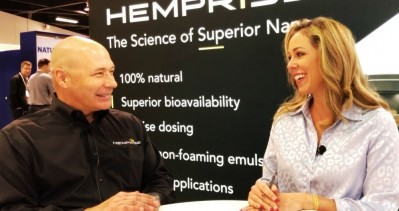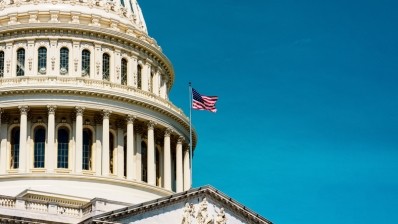USDA Final Hemp Rule draws mixed reactions from industry stakeholders

The Final Rule incorporates modifications to regulations established under the interim final rule (IFR) published in October 2019. The modifications are based on some 5,900 public comments and lessons learned during the 2020 growing season.
“USDA staff have taken the information you have provided through three comment periods and from your experiences over a growing season to develop regulations that meet Congressional intent while providing a fair, consistent, science-based process for states, tribes and individual producers. USDA staff will continue to conduct education and outreach to help industry achieve compliance with the requirements,” said USDA Marketing and Regulatory Programs Under Secretary Greg Ibach.
The final rule, published in the Federal Register, goes into effect March 22, 2021.
Some of the key provisions of the final rule include licensing requirements; recordkeeping requirements for maintaining information about the land where hemp is produced; procedures for testing the THC concentration levels for hemp; procedures for disposing non-compliant plants; compliance provisions; and procedures for handling violations.
The provisions drew both applause and ire from industry stakeholders, with many praising the relaxed negligence standard (for THC content) while frowning upon the requirement for hemp to be tested at DEA-certified labs.
For Asa Waldstein, owner of the regulatory consulting company Supplement Advisory Group and American Herbal Products Association (AHPA) Cannabis Committee chair, he found himself in the middle of the road.
“Although there are some positive aspects, this rule does not go far enough to protect farmers and support the growth of the hemp industry,” said Waldstein.
Negligent violation, disposal and remediation of non-compliant plants
The final rule raises the negligence threshold from .5% to 1% THC content by dry weight and limits the maximum number of negligent violations that a producer can receive in a growing season (calendar year) to one. Hemp producers must dispose of plants that exceed the acceptable hemp THC level. However, if the plant tests at or below the negligent threshold stated in the rule, the producer will not have committed a negligent violation.
The final rule also allows for alternative disposal methods for non-compliant plants that do not require using a DEA reverse distributor or law enforcement and expands the disposal and remediation measures available to producers. The Agricultural Marketing Service (AMS) said they will provide remediation techniques in a separate guidance document.
Timing of sample collection
The interim final rule stated a 15-day window to collect samples before harvest, with the Final Rule extending this requirement to 30 days before harvest.
“The two biggest positives in the Final Rule are the increased THC negligence limit from .5% to 1.0%, and the lengthened pre-harvest sampling time from 15 to 30 days. I give this Final Rule a C as it provides some protection for farmers but is lacking in other areas, such as the total THC and DEA-registered lab requirements,” noted Waldstein.
Attorney Jason Tortorici, who serves as general counsel for the Alabama Cannabis Industry Association and Alabama Hemp Industry Trade Association, said the USDA’s final rules is a commendable step which should strengthen the industrial hemp sector in the coming year. “Expanding the negligence threshold for noncompliant plants from .5% total THC to 1%, allowing producers to utilize alternative methods for destruction or remediation of non-compliant plants outside of a DEA reverse distributor or law enforcement, and delaying the requirement that testing be performed by DEA-certified labs should enable the industry to thrive in 2021 as FDA expands and refines its efforts to assess the safety and efficacy of hemp CBD based consumer products,” noted the attorney.
However, David Hasenauer, CEO of Green Point Research, an international phytocannabinoid hemp biomass originator and processor, said he is concerned about farmers who are still learning the ropes.
“Even though there are increases to the negligence threshold from .5% to 1% total THC, there are still a lot of farmers who are new to growing this crop who should not be subject to criminal sanctions for unintentionally growing a crop above the total THC limit,” explained Hasenauer.
Hemp pioneer Richard Rose of the Richard Rose Report, said the rule doesn’t go far enough. “It's a start but only a start. Raising the Negligence Standard is helpful so fewer can be bullied by local cops. Using total THC instead of delta-9 THC is contrary to Congressional intent. The sampling protocol is contrary to USDA's own guidelines. The remediation/disposal options are helpful,” explained Rose. “It was the middle way, trying to hold off DEA for a year but also give farmers a little breathing room with the Negligence Standard.”
Collette Kakuk, Vice President of Global Marketing at HempRise – a subsidiary of global botanical extract business, Layn, said farming hemp has been a learning curve in the United States, and the company is supportive of all common sense laws and practices that can help the American farmer be more successful.
Kakuk applauded the harvesting window extension, along with the THC levels and plant disposal.
“While hemp must still test < .3% THC per the FDA, the USDA adjusted how it determines negligence for crops that test above .3% and how non-compliant plants must be disposed of. Hemp testing over .3% THC must still be destroyed, but we’re delighted farmers do not need to use a DEA-registered reverse distributor or law enforcement to dispose of non-compliant plants and also that they can now also salvage plant material that tests in compliance or blend the entire plant into compliant biomass material vs. lose the full crop. A solid win,” said Kakuk.
Ron Fazio COO of Hemp Synergistics, a biotech company dedicated to making intelligent hemp products, said the company always welcomes regulation, especially when it comes from the federal level.
“We, as with every other stakeholder in the hemp industry, are still reviewing and digesting the USDA Final Rule. However, we are very encouraged that the USDA has relaxed their definition of hemp to include the total THC concentration to 1%. We, as with many others, would like to see further direction on the regulation of D9THC vs D9THCA, as it has a significant impact on the industry. Further, Hemp Synergistics believes that cooperation between the USDA, DEA, and FDA could greatly enhance regulation and compliance,” said Fazio.
Testing at DEA-registered laboratories
Since there are not enough DEA-registered laboratories to test all the anticipated hemp, the DEA has agreed to extend the enforcement flexibility allowing non-DEA registered labs to test hemp until January 1, 2022. They added that they are processing lab registration applications quickly to get more labs testing hemp DEA-registered.
“This was not an aspect included in the 2018 Farm Bill, but we are supportive of measures that advocate for consumer safety and bring about increased distinction and legitimacy to businesses entering this market with consumer safety and transparency in mind,” said Kakuk. “In total, this will also bring about increased responsible cultivation and extraction of minor cannabinoids, which have a long runway into new pathways to benefit consumer health and well-being.”
However, Hasenauer said the rule doesn’t take into consideration the financial hardships the rule may have on farmers.
“The rule’s use of the DEA-registered reverse distributor program and the new options for remediation really only speak to avoiding potential criminal liability and destruction of the crop, without providing an option for true remediation of THC such that the farmer has some ability to recoup costs. It is possible for large scale extraction and remediation of THC in hot crops with the return of that remediated product to the farmer. An update to provide an opportunity for a THC remediation supply chain utilizing the reverse distributor system would offer an alternative to the extreme financial hardship the current remediation techniques discuss. Even aside from the financial argument, it is poor policy to force farmers to destroy valuable natural resources. It is just poor stewardship, THC is easily remediated from extracted goods,” said Hasenauer.
“The fear of THC is misplaced, since with higher amounts of CBD it is not a diversion threat. And if grown for fiber or soil remediation or stabilization, it should not even be a factor. These and the state regs give big farmers an advantage and discourage breeding, small plots, and field trials,” said Rose. “I'm grateful they did not mandate use of only certified cultivars, that's the biggest flaw in European hemp.”
Simply put, Waldstein said the DEA registered lab requirement is ‘puzzling’ and he believes using an ISO 17025 accredited lab should suffice.
Sampling method, tribal regulatory authority
Stakeholders requested that samples may be taken from a greater part of the plant or the entire plant. They also requested sampling from a smaller number of plants. The Final Rule allows states and tribes to adopt a performance-based approach to sampling in their plans. The plan must be submitted to USDA for approval. It may take into consideration state seed certification programs, history of producer compliance and other factors determined by the State or Tribe.
The interim final rule did not specifically address whether a tribe with an approved USDA plan could exercise primary regulatory authority over the production of hemp across all its territory or only lands over which it has inherent jurisdiction. The Final Rule provides that a tribe may exercise jurisdiction and therefore regulatory authority over the production of hemp throughout its territory, regardless of the extent of its inherent regulatory authority.
“They opened the door to a state/tribe using a more-liberal approach to testing, giving that state/tribe an advantage,” said Rose. “While this is a start, it'll take way more to make hemp a success in the US, a collaboration of state, federal, finance, processors, farmers, and at least one Fortune 500 firm as a customer.”
Rose added that while “.3% max THC can only be changed by Congress, the sampling protocol could have made all the difference, testing more of the plant than just the top 5-8 inches (especially for breeders).”
Biden-Harris will have the final word
While the final rules are slated to take effect on March 22, insiders expect agriculture officials under the Biden Administration to make adjustments, with many pointing to the MORE Act.
The Marijuana Opportunity Reinvestment and Expungement Act, also known as the MORE Act, is legislation that deschedules cannabis from the Controlled Substances Act and enact various criminal and social justice reforms related to cannabis, including the expungement of prior convictions. Introduced in 2019, the US House of Representatives passed the bill on December 4, 2020, marking the first time a chamber of Congress approved legislation to end federal marijuana prohibition. Then-Senator Kamala Harris was the lead Senate sponsor of the MORE Act.
“In a just world, VP Harris' MORE Act would have hemp provisions in it, such as 1% delta-9 and no mandatory decarboxylation testing method. Without that, we might see adult-use marijuana legally easier to grow than hemp once the MORE Act passes, just as we did before the 2018 Farm Bill. Banning only drug felons (mostly pot growers) is as cruel as it is misplaced, who better to grow hemp? FDA has been lying about Cannabis having no medical value for 51 years now, and with states banning smokable hemp as a non-tobacco tobacco replacement they are all protecting Big Pharma and Big Tobacco from the inevitable. Smokable hemp has profoundly positive public health implications,” said Rose.
“It would be completely expected to see the Biden Administration make efforts to decriminalize marijuana,” said Fazio. “While this sounds promising, ‘decriminalization’ is a poorly understood term. ‘Controlled’ is more appropriate. Unfortunately, marijuana will remain controlled, especially at the state level.”
“Maybe more important than Biden and Harris, who have had historically mixed policy positions around cannabis, is the change in Senate control,” Hasenauer pointed out. “The house had previously passed the MORE Act which would legalize all cannabis by removing and THC from the Controlled Substances Act, but Sen. McConnell refused to hear it in the upper chamber. This alone would allow farmers access to the more than $50 billion illicit cannabis market in the US.”
On the stump, the Biden campaign did tout their support for cannabis decriminalization, with Senate Majority Leader Chuck Schumer stating that legalization would be a major priority in a Democratic-controlled Senate.
“Additional reforms including removal of cannabis from schedule I of the Controlled Substances Act are expected during the first 100 days of the Biden-Harris Administration, which should expedite formulation and implementation of more comprehensive and uniform rules and regulations on the federal level that should propel the sector’s growth,” said Attorney Tottorici. “These changes as well as those expected over the course of the next year already appear to be drawing new investors in the hemp and CBD space. This infusion of fresh capital as well as the promise of additional reform have our clients and our firm preparing to ride a tsunami size wave of new opportunities and challenges into the next decade. Not only do we expect to see record numbers of start-ups, mergers, acquisitions and IPO’s, but the cannabis and hemp space will likely be the focus of significant litigation over the next 5 years.”









